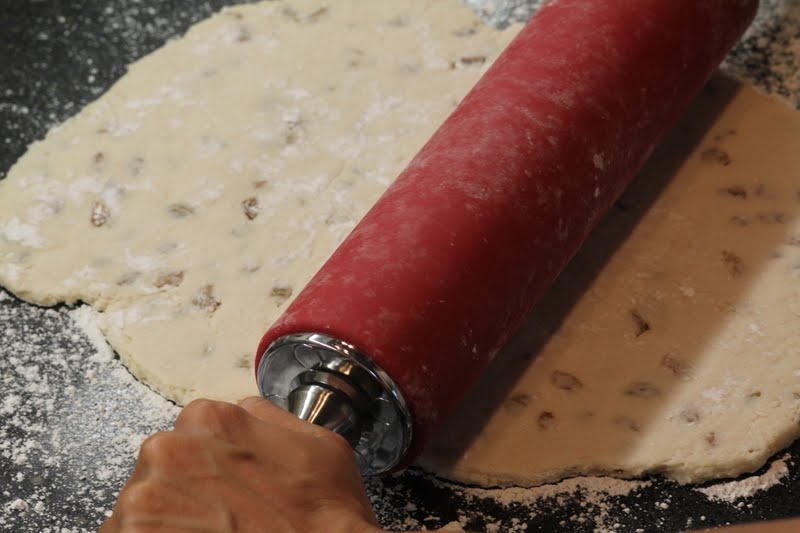Scones
>> Monday, June 27, 2011 –
baked goods
Scones are a major part of the British afternoon tea. The scones that I am making today are Devon scones with golden raisins. The typical Devon scone is made without raisins and is always glazed with egg. They are quick and easy to make. Once baked they are soft, light and somewhat dry, but heavenly. Slathered with clotted cream or English double Devon cream and preserves, just takes you to complete new level of deliciousness. These scones can be easily whipped up for breakfast too, no need to wait until teatime.
 |
| Photography by Robert Demetrius |
2 cups all-purpose flour
1 tablespoon flour for dusting
5 teaspoons baking powder
¼ teaspoon salt
5 tablespoons granulated sugar
5 tablespoons unsalted butter
2/3 cup whole milk
½ cup of golden raisins
1 egg yolk at room temperature, lightly beaten, to glaze
 |
| Sifting All-Purpose Flour and Baking Powder |
In a large mixing bowl, sift 1½ cups all-purpose flour and 5 teaspoons baking powder then mix in ¼ teaspoon salt and 5 tablespoons granulated sugar. Blend the dried items together.
 |
| Adding Butter Pieces |
Add 5 tablespoons of unsalted butter, which has been cut into pieces, into the flour, baking powder, salt and sugar.
 |
| Incorporating Pieces of Butter |
Using a fork or a pastry blender mix until the butter is incorporated into the dried ingredients and has a crumble-like texture.
 |
| Forming a Well in the Crumble-Like Ingredients |
Form a well in the middle of the crumble-like ingredients, then add 2/3 cup whole milk and ½ cup of golden raisins and knead the ingredients gently together.
 |
| Adding Milk |
 |
| Mixing Milk and Raisins Into the Dried Ingredients |
 |
| Dough Nearly Ready to Knead |
 |
| Kneading Dough |
 |
| On a Flour Dusted Surface |
Place the dough on a flour-dusted surface.
 |
| Rolling Out Dough |
Roll the dough out to about a ¾ inch thickness and with a cookie cutter that is about 2½ inches in diameter, cut out the scones.
 |
| Cutting out Scones |
 |
| Scones on Greased Parchment Paper |
Place the pieces on a greased parchment paper lined cookie sheet.
 |
| Whisking Egg Yolk |
In a small bowl, whisk the egg yolk gently and brush the whisked yolk on the top of the scones and let it rest for 15 minutes before placing into the oven.
 |
| Glazing Scone with Whisked Egg Yolk |
While the dough is resting, preheat the oven to 400° Fahrenheit.
 |
| Placing Scones in the Oven |
Bake on the top shelf of the oven for 7 – 10 minutes, or until they have risen and are golden brown.
 |
| Devon Scones with Golden Raisins with English Double Devon Cream and Seville Orange Marmalade |
Voilà! This recipe makes 12 scones. Enjoy with a nice cup of steaming tea or coffee, slathered with English double Devon cream or clotted cream with strawberry preserves. I am having mine with English double Devon cream and homemade Jamaican Seville orange marmalade. Enjoy!





































